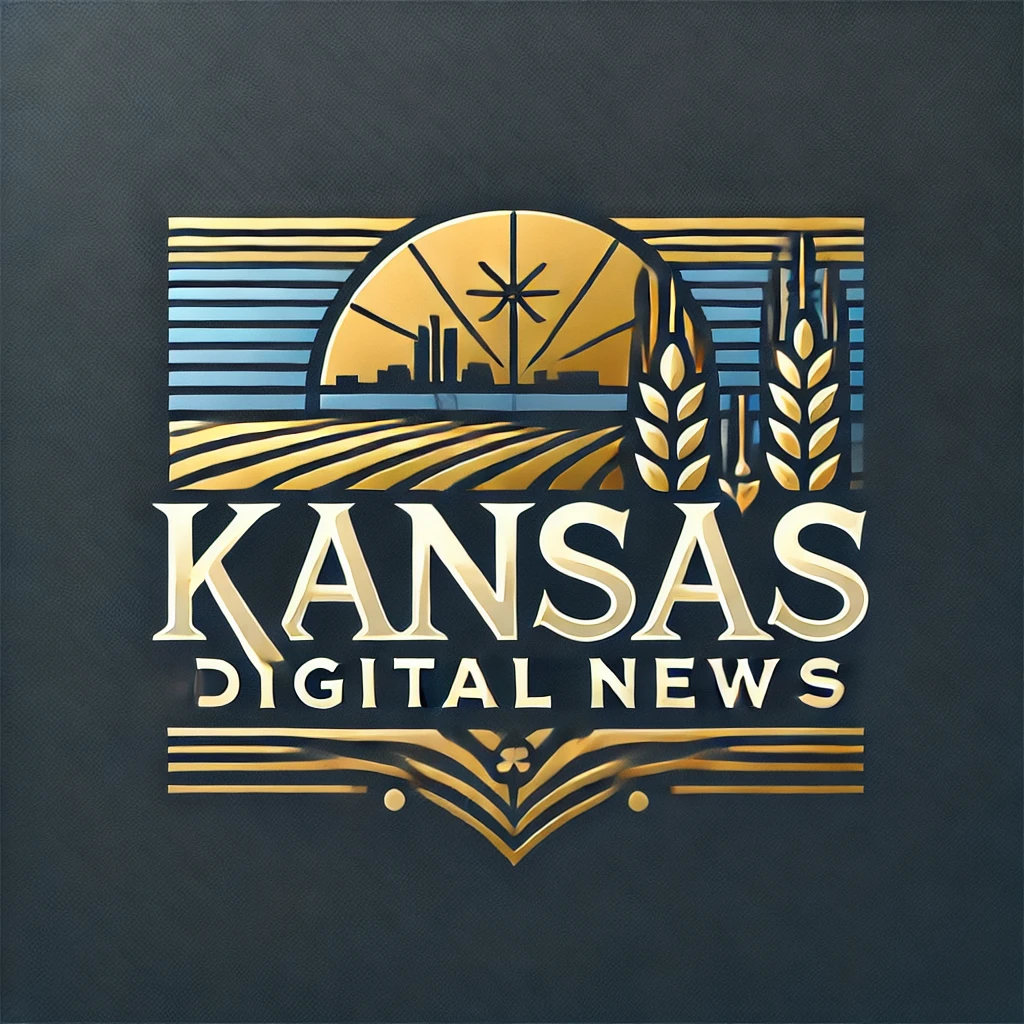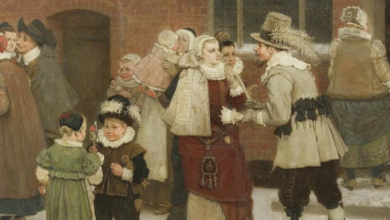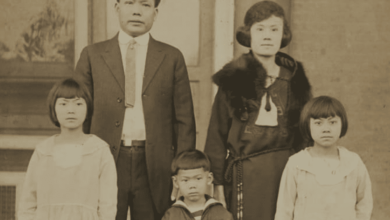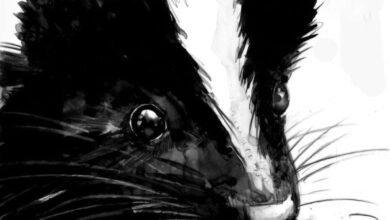The Swing Era In The Capital District
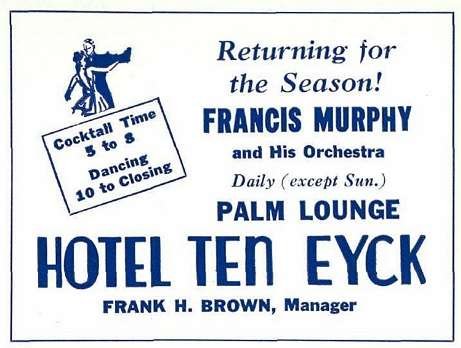

 It was swinging in the Tally-Ho Club on Hudson Avenue and in the Lark Tavern on Madison. Music filled the Klub Eagle and poured out the doors of the Castle Ballroom. The Rhythm Club on Madison was rocking. Sophisticated sounds were swaying in the hotels – at the Ten Eyck and the DeWitt. As the Swing Era crested between 1935 and 1945 New York City was its beating heart, but cities around the country featured home-grown bands of their own.
It was swinging in the Tally-Ho Club on Hudson Avenue and in the Lark Tavern on Madison. Music filled the Klub Eagle and poured out the doors of the Castle Ballroom. The Rhythm Club on Madison was rocking. Sophisticated sounds were swaying in the hotels – at the Ten Eyck and the DeWitt. As the Swing Era crested between 1935 and 1945 New York City was its beating heart, but cities around the country featured home-grown bands of their own.
The greater Capital District, especially Albany, featured a rich and vibrant swing music scene.
Michael Catoggio and Bill Schilling have been engaged in research on the Swing Era in the greater Albany area for several years with a particular interest in the local musicians. They’ve spent countless hours in libraries, archival collections, and other historical repositories and interviewed local musicians and their families.
The result is the website www.albanynyswinghistory.com. The site includes a annotated list of venues such as bars, clubs, hotels, theaters and other places where where the music happened; a collection of information about local bands and musicians; a section highlighting Swing Era activity on Capital District radio stations; a self-guided tour of Swing Era sites in downtown Albany; a chronology of local music from 1938 until 1942; and lots more.

 Some musicians scratched out a full-time living, but many were working people during the day. “Folks who arrived home on a Friday night, prepared dinner and collapsed on the couch,” Catoggio and Schilling report. “Later they’d head to their bedroom closet to find a tuxedo or sequined dress, and a well-worn instrument case on the floor. Fully adorned, they would emerge onto the street and head to a club. There they’d enter a fantasy world of sparkling curtains and dazzling lights.”
Some musicians scratched out a full-time living, but many were working people during the day. “Folks who arrived home on a Friday night, prepared dinner and collapsed on the couch,” Catoggio and Schilling report. “Later they’d head to their bedroom closet to find a tuxedo or sequined dress, and a well-worn instrument case on the floor. Fully adorned, they would emerge onto the street and head to a club. There they’d enter a fantasy world of sparkling curtains and dazzling lights.”
The pair of researchers found a significant numbers of area venues – more than 70 in Albany alone, and nearly as many spread throughout Schenectady and Rensselaer Counties. Some featured musicians from out of town, but many mostly featured area talent.
Some swing era places are still around today. The Manor Inn at 77 Washington Avenue in Rensselaer hosted a couple of very prominent local performers, including the Horton Girls’ Orchestra, managed by their father, Aub Horton of Bethlehem.

 An advertisement placed in the April 8, 1939 issue of Billboard Magazine, stated: “Horton Girls Orchestra and Revue ‘Real Rhythm’ feature[ed] the Horton Sisters, Maxine, Shirley and Madelon, Stars of Stage and the Radio.” Today the Manor Inn is known as Jimmy Casey’s Restaurant.
An advertisement placed in the April 8, 1939 issue of Billboard Magazine, stated: “Horton Girls Orchestra and Revue ‘Real Rhythm’ feature[ed] the Horton Sisters, Maxine, Shirley and Madelon, Stars of Stage and the Radio.” Today the Manor Inn is known as Jimmy Casey’s Restaurant.
The Manor Inn also hosted the Mike Pantone Orchestra. Pantone began his career with the popular King Jazz Orchestra in the 1920s. He operated a music school on lower Madison Avenue in Albany and formed his own band in the early 1930s.
By the 1935 he was a fixture in the area, playing long gigs at the Lark Tavern on Madison Avenue – another establishment still standing. Pantone died on a Thursday, at the young age of 42, in his apartment at 342 Madison Avenue. He had played the Lark, just up the street, the previous Saturday night.
Stuarts was an upscale nightclub at 4 Sheridan Avenue, just off North Pearl in Albany. The building is still there today, housing a Mexican restaurant. The Francis Murphy Orchestra played the Stuarts frequently. Thee club was owned by lawyer Irving Doling played piano for the Murphy Orchestra.
Francis Murphy, born in Albany, was classically trained. He formed his band in 1930. Arguably, his Orchestra was the preeminent local band of the era. They were one of the few area bands to play the Kenmore’s Rain-Bo Room.

 They played the Ten Eyck’s Roof Garden and their prestigious Flag Room. They were regulars at the DeWitt Clinton and played in numerous bars and ballrooms in the area. In 1940 they played “the season” at Riley’s Lake House, outside Saratoga Springs. They were heard regularly on WOKO radio, based at 8 Elk Street in Albany.
They played the Ten Eyck’s Roof Garden and their prestigious Flag Room. They were regulars at the DeWitt Clinton and played in numerous bars and ballrooms in the area. In 1940 they played “the season” at Riley’s Lake House, outside Saratoga Springs. They were heard regularly on WOKO radio, based at 8 Elk Street in Albany.
Most of the other clubs in Albany have been lost to parking lots, arterial ramps and new construction.
Skippy’s Music Bar sat on Market where the Skippy Trio featured a young Skippy DeSair. DeSair would go on to play with the Woody Herman Orchestra. Big Charlie’s Harlem Grill was located at 52 ½ Hamilton, now a vacant lot across from the Greyhound station. Black musician Jimmy McGriff played at Dale’s Grill on 51 Central. Billy Harris, played the Klub Eagle at 32 Eagle. The Jimmy D’Angelo Band had a long-running gig at the University Grill at 85 South Pearl. Hal Turner’s Rhythm Boy’s held court at Club Frolics at 79 South Pearl.
Other notable bands included Rookie Davis and her Harlem Swing Orchestra (Davis was an African American). Paul Parker and His Orchestra had a long gig at the Hunter’s Clinton Height Inn in East Greenbush. Gordie Randall and his Orchestra made frequent appearances at Air-O-Dance, a giant dance hall 12 miles outside Albany on Route 20. Randall went on to become the bandleader at WGY.

 And while the locals played their horns downtown, the rich and famous came to town. Forty-five cents could get you a night at the Palace to see Glenn Miller, Benny Goodman, or Fletcher Henderson.
And while the locals played their horns downtown, the rich and famous came to town. Forty-five cents could get you a night at the Palace to see Glenn Miller, Benny Goodman, or Fletcher Henderson.
The Grande Dame of them all was the Kenmore Hotel’s Rain-Bo Room, where Louis Armstrong, Duke Ellington, Cab Calloway, and Tommy Dorsey with Frank Sinatra played in an intimate setting.
Visit the Swing Era in the Capital District website to learn more. Michael Catoggio and Bill Schilling deliver occasional presentations, so reach out to them to set a date.
Michael Catoggio and Bill Schilling generously contributed their work to this essay.
Illustrations, from above: The Francis Murphy Orchestra in 1939 at the Ten Eyck Hotel Roof Garden; Advertisement for Hotel Ten Eyck in Albany featuring the Francis Murphy Orchestra (Friends of Albany History); The Horton Girls Orchestra and Revue; The Tally-Ho Tavern (center) on Hudson Avenue in Albany on July 6, 1938; and the Rain Bo Room at the Kemore Hotel.
Source link
